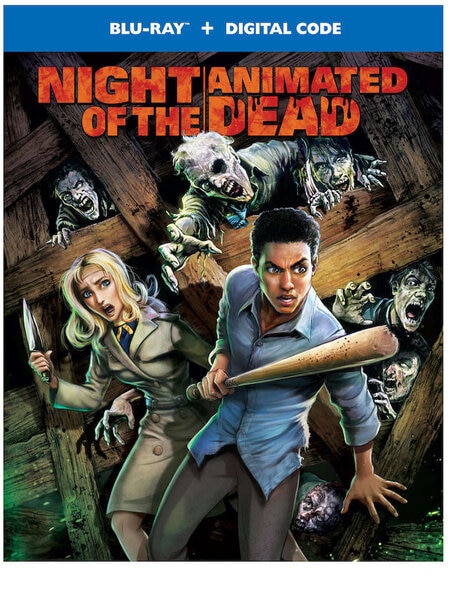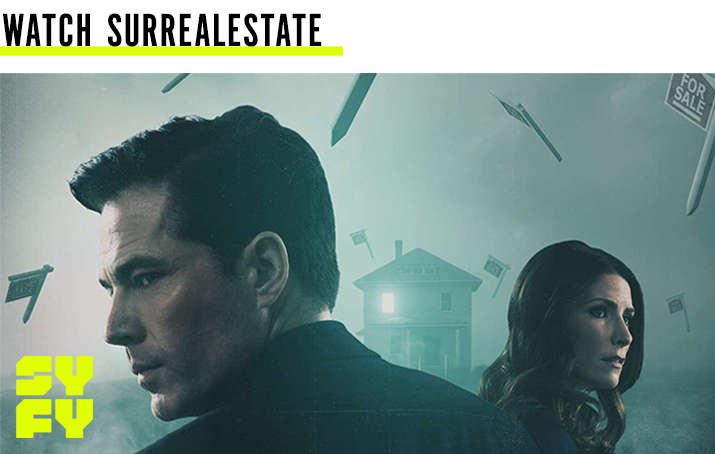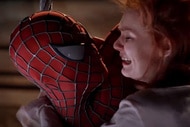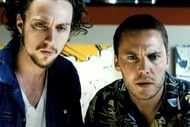Create a free profile to get unlimited access to exclusive videos, sweepstakes, and more!
Director Jason Axinn's 'Night of the Animated Dead' honors Romero's classic in a colorful, gory adaptation
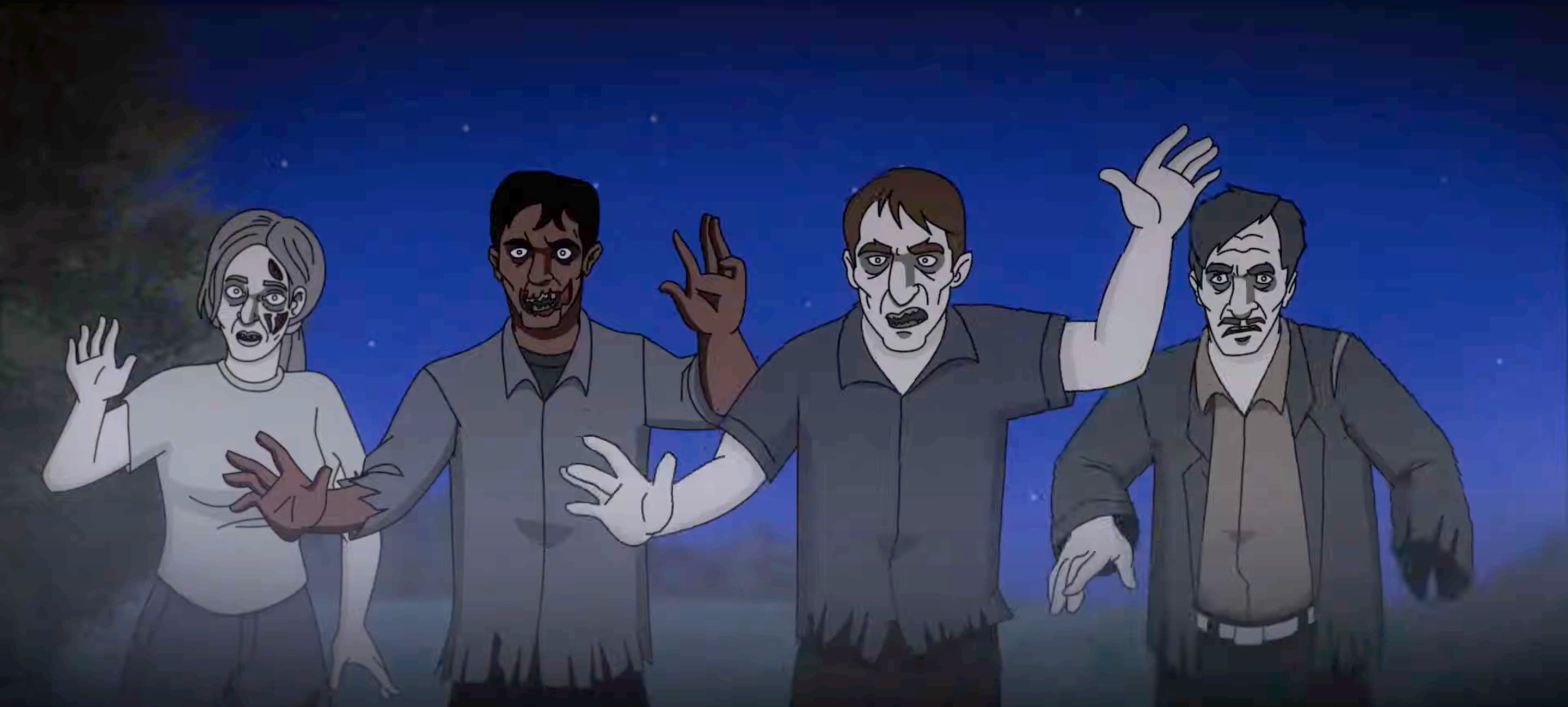
On Oct. 1, George Romero’s seminal horror classic, Night of the Living Dead, celebrates its 53rd anniversary. Heralded as the film that ushered in an entirely new horror genre — the zombie film — it remains the rare cinematic groundbreaker that hasn’t lost any of its potency over time. This is why Night of the Animated Dead, out Sept. 21 on digital, is such an interesting endeavor from Warner Bros. Animation.
A feature-length, animated adaptation of Night of the Living Dead, Night of the Animated Dead transfers the plot, characters, and scares from the original into the realm of color and animation. Directed by Jason Axinn and featuring the vocal talents of Josh Duhamel, Dulé Hill, Katee Sackhoff, and Nancy Travis, Night of the Animated Dead is hoping to honor the source while perhaps welcoming a younger audience into Romero’s world.
In preparation for the release this week, SYFY WIRE got on the phone with Jason Axinn to find out how this adaptation distinguishes itself from the original, what’s been added, and how the violence might be even scarier in this medium.
What was the impetus to even attempt something like this adaptation?
The project was started before I came on. But I know the original idea was to make a classic more accessible to modern audiences. And yet, generally, when people do remakes, it's very easy to do something that an audience doesn't like. We were very, very careful to make this a love letter to the original movie, Night of the Living Dead, but also include additions here and there throughout the film to make it exciting to people who've already seen the original who know it. They can watch this film and see the same movie but also be surprised by the new things that we added.
The original is considered a black-and-white classic. How did adding color to the story end up affecting the piece?
One of the challenges of making this film in color, of course, is that we had to research what the original actor's clothing look like in color when they made the film. We did it, but it was hard to find set photos. When you watch this movie, whatever their outfits look like that is what their clothing looks like on the original set. We tried to do that for every facet of the movie, the cars, the house, everything we tried to match to what the actual set looked like color-wise in the original film. That being said, we don't want the film to be very, super bright, colorful. We made sure that the colors are muted so that whenever there is violence, the violence is a lot more visceral, and jumps out and surprises you. Having a color palette beyond black and white allows you to show violence in a much more detailed and specific way. We got to kind of play with that a little bit in the movie.
What have you carried over from the original and what have you changed in this version?
We wanted to make sure that the film is as close to the original as possible. Just because that way, when you watch this version of it, if you watch the original after it, you'll see it's very similar. The dialogue is exactly the same. We tried to keep iconic moments or iconic shots, all the nuance of the characters and how they fight. We wanted it to be so that you can watch this film and see Night of the Living Dead. But at the same time, we felt that if George Romero was making this film today, what would he do with the violence now that he's got an unrestricted budget? I thought that he would go pretty far with the violence because in animation, you can really do whatever you want. The other thing you have to watch out for is like is not making it cartoonishly over the top. I feel George Romero would have really wanted to push the boundaries of violence in an animated film. And so every time there was a place for violence, we made sure that we hit it as hard as we could. Also, we got to include a scene that's not in the original film.
What does it involve?
In the original film, the main character of Ben tells the story of how he got his truck. It's a monologue. In this, we actually get to see the actual scene because I'm assuming in the original film, maybe in terms of pacing or in terms of budget, they couldn't show what he's describing. But in animation we can, so we decided to include that scene and give it as a surprise to the audience.
There have been a lot of zombie projects since 1968, so audiences expect a lot from the genre. How do you lean into that?
Every time I could, I tried to work in an Evil Dead 2 kind of violent moment. I think violence can be fun and funny and gross at the same time. And the other thing is that, since it's animation an audience has a buffer between having a visceral reaction to it. Because to them, it's drawn and it's not really happening to a person. Animation style-wise, we tried to get as close to reality as possible, so that an audience would have an easier chance to connect emotionally with violence in the film. But also, because it's animated, you have to go a little harder, you have to go a little bigger, just so that it has a chance to land in just the right place for an audience. You have to do the dance between those two things.
Talk about the sound design which is stellar in adding to the mood and scares.
Sound design is my favorite stage of filmmaking, because that's where you set the emotional or subconscious tone of what you're watching. And we have a fantastic score from Nima Fakhrara who really pushes the movie into an emotional space that is very, very dark and very, very tragic. Sound design-wise, the original film has the restrictions of what a 1968 sound design could possibly have for a low-budget indie horror film. We spent a lot of time just trying to make it as unsettling and creepy as possible on a subconscious level. There's a lot of stuff in there that I'm sure that you wouldn't hear the first time you saw the movie, but it's all there and all placed intentionally. Our composer found a way to underscore everything so that as the movie continues to go on, it slowly creeps up and ramps up in intensity. And it's just uncomfortable.
With your voice cast, did you want them to use the original film to influence their performances?
Each of the actors watched the original film because I wanted them to see what the emotional beats were so that they can understand what the character is going through for each line of dialogue. But they were told not to do an impression of the original actors. They all brought their own interpretation of the character based on those emotional choices and reactions of the original film. Watching each individual person interpret the role was fascinating and amazing. For instance, Josh Duhamel as Harry Cooper, that's a tough role because Harry Cooper is protecting his family. His daughter's been bitten and she's in the basement. He's clearly someone that you can identify with as he's protecting his family. But at the same time, he's like, the villain. He's aggravating everybody else. That's a tough line to walk as a character. How do balance those two things, and I think Duhamel does a fantastic job. And Dulé Hill, I know. I'm a huge fan of The West Wing. That's my favorite show. He, of course, shows his dramatic range every episode of that show. And even knowing what Dulé Hill was capable of as a dramatic actor, I wasn't ready for how much he just tore the roof off. And Nancy Travis was just absolutely amazing too.
Night of the Animated Dead rises on Sept. 21.
